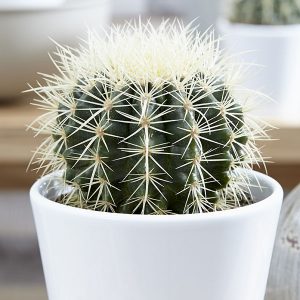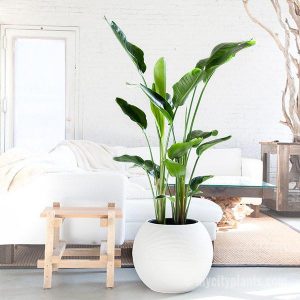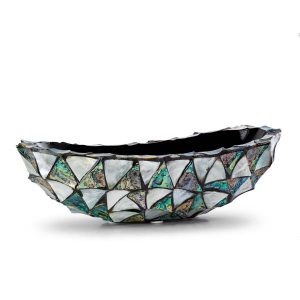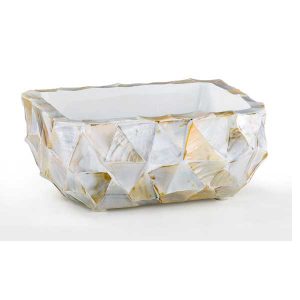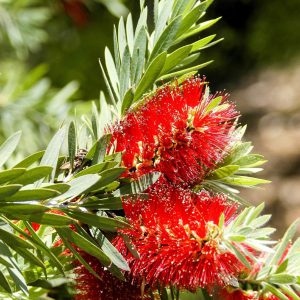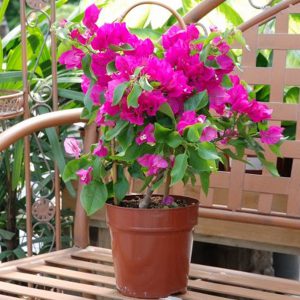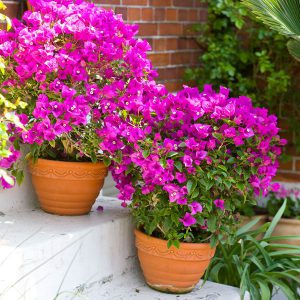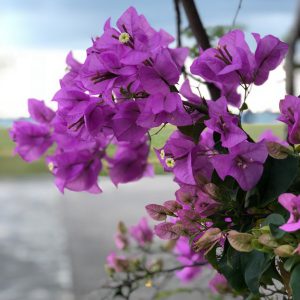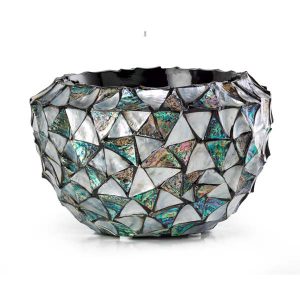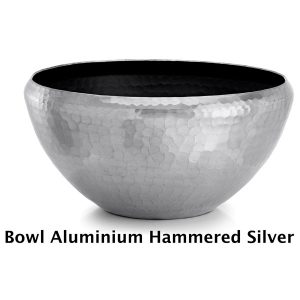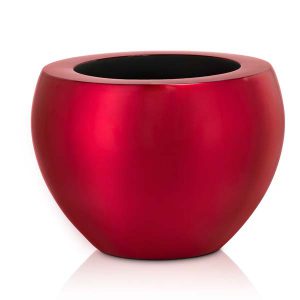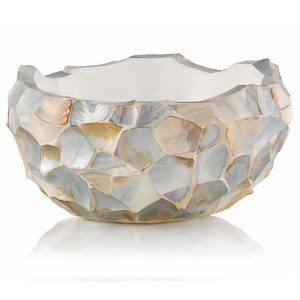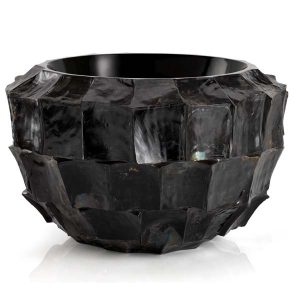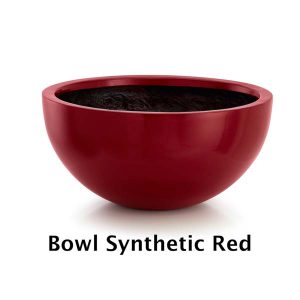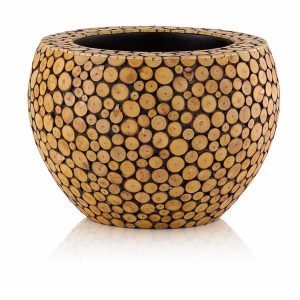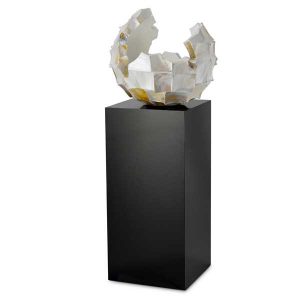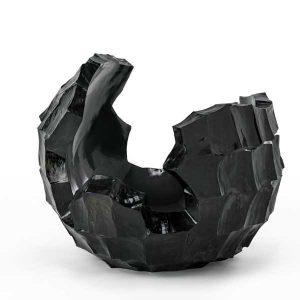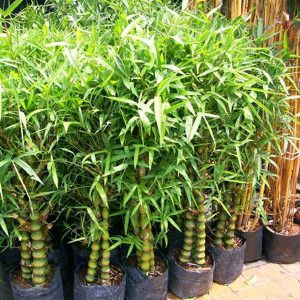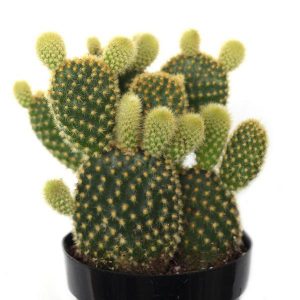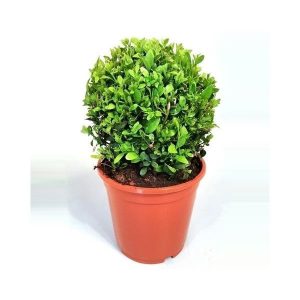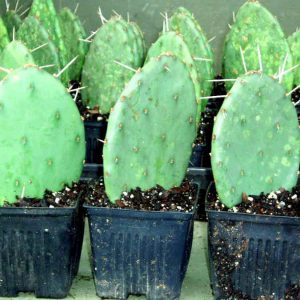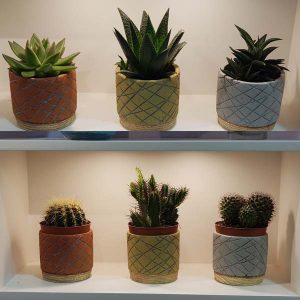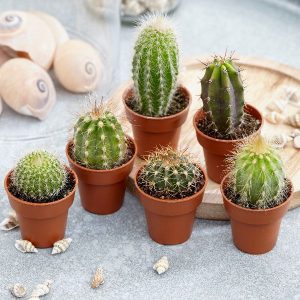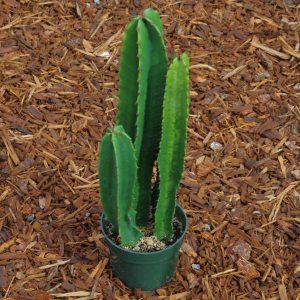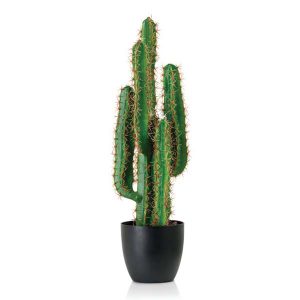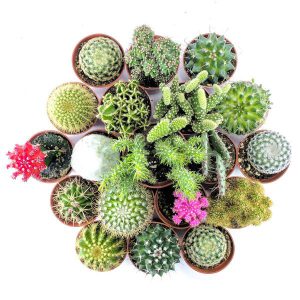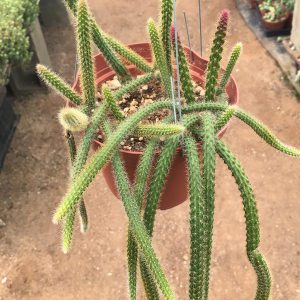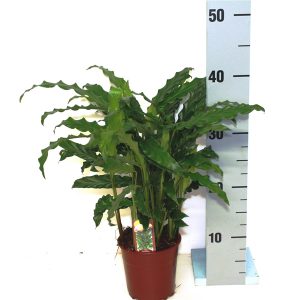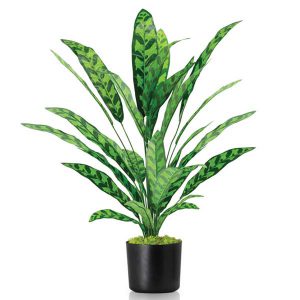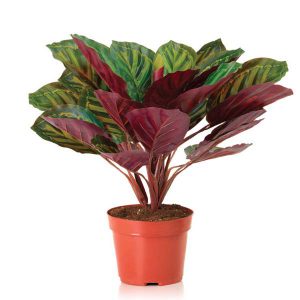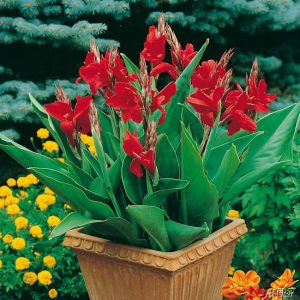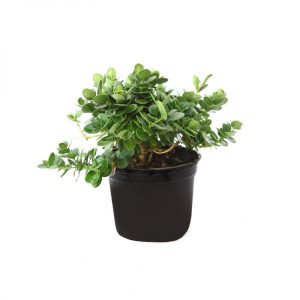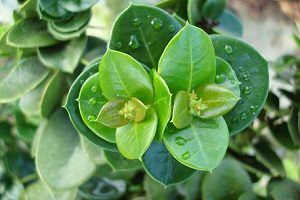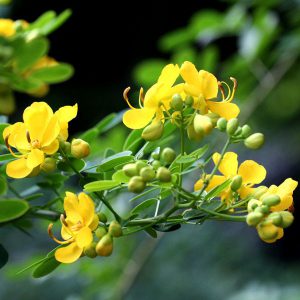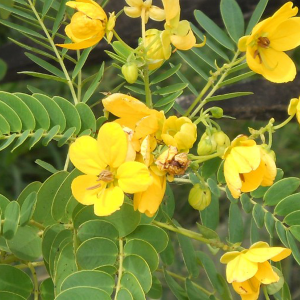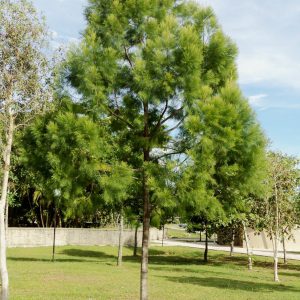Shop
Barrel cactus
Echinocactus grusonii, popularly known as the golden barrel cactus, golden ball or mother-in-law’s cushion, is a well known species of cactus, and is endemic to east-central Mexico.
Water is a very important component to caring for barrel cactus. The plants are native to arid desert regions and usually have only rainfall to supply their moisture needs. Water your barrel cactus once per week in summer. The barrel cactus doesn’t need much water in winter when it is dormant.
AED 200.00Add to cart
Bird of paradise
Since birds of paradise are tropical plants, it’s no surprise that they enjoy bright sunlight. Place your indoor bird of paradise in a spot where it will get the most light. The only exception is if it’s very hot, such as in a sun room; in that case, bright, indirect light is best. If your plant’s leaves are yellowing, try increasing the amount of light exposure.
Birds of paradise prefer rich, well-draining soil that still retains some moisture.
Birds of paradise do best with a regular watering schedule. Keep the soil moist in spring and summer, during the growing season, but allow the soil to dry between waterings in the dormant fall and winter months.
Water that has a high salt content could burn the leaves. If this is the case with your water, consider using rain water, when possible, or distilled water to water your bird of paradise. Birds of paradise do well in typical household humidity, but they may benefit from intermittent misting during dryer winter months.
AED 50.00Read more
Bottel brush (callistemon vimnalis)
Sharp-tipped leaves are the origin for the “prickly” name for this plant, and it definitely fits. Up to 2″ in length, these pointy leaves require the use of gloves to prune, but the flower stalks more than make up for the trouble.
Those flowers are actually clusters of 7-36 small flowers with extremely long stamens. The stamens are bright scarlet in color with yellowish-green tips, giving them a distinctly dual-colored look.
Visually stunning to look at, this plant can grow from five to thirty feet in height.
AED 145.00Add to cart
Bougain villea
Water a newly planted bougainvillea frequently to keep the soil moist. Once the plant is established, it blooms best if the soil is a little on the dry side. Water the plant until liquid drips through the drainage hole, then don’t water again until the potting mixture feels slightly dry. However, don’t allow the soil to become completely dry because a water-stressed plant won’t bloom. Water the plant immediately if it looks wilted.
AED 48.00Add to cart
Bougain villea pink pixie
When it comes to watering, Bougainvillea is pretty drought tolerant once established. It prefers a good, deep watering every 3-4 weeks rather than frequent shallow waterings. When establishing, be sure to give yours regular water. It’s subject to a few types of root rots so don’t over water. The soil should be well drained which will help prevent rot.
AED 55.00Add to cart
Bougain villiea spectabilis soft pink
- Good for making bonsai
- Good for Topiary
- Good for screening
- Good for Hedges and Borders
- Can grow on trellis or chain link fencing
- Attracts butterflies
- Animals will not eat
- Thorny or Spiny
- Suitable for road median planting
- Hanging or weeping growth habit
- Salt or salinity tolerant
- Good on seaside
AED 48.00Add to cart
Buddha bamboo (chines Bamboo)
Buddha’s Belly Bamboo likes sunlight. Full sunlight helps the plant grow faster.
Part shading is essential for maintaining proper health of the plant.
The Buddha’s Belly plant is not very fond of water. It never needs much water to thrive and grow.
Watering the plant once a week can be enough when growing indoors.
It is essential to let the soil get completely dry after one watering session, before watering the plant the next time.
The plant should never be allowed to sit in water. That can cause the untimely death of the plant.
AED 105.00Add to cart
Bunny ear cactus collection
Cacti are the perfect plant for the novice gardener. They are also the perfect specimen for a neglectful gardener. Bunny ears cactus plant, also called angel’s wings, has ease of care combined with an original appearance.
AED 100.00Add to cart
Buxus sempervirens
This widely used genus is prized for its evergreen foliage and its ability to withstand heavy pruning. The yellow-green flowers are insignificant. Buxus has been used in hedging, topiaries, and parterres for centuries.
Noteworthy CharacteristicsOpposite, glossy rounded to lance-shaped leathery leaves. Variegated forms exist.
CareGrow in any soil, preferably in part shade. Tolerates full sun if the soil is moist. Prune in late spring and summer; supply fertilizer after any heavy pruning to aid in regeneration.
PropagationRoot semi-ripe cutttings in summer. Graft in winter.
AED 370.00Add to cart
cactus ears
This classic cactus has large, flat, dusty green paddles with lots of sharp thorns. The thorns are evenly distributed across the pads and also form an areola at the tip of each pad.
In addition to stationary thorns, the prickly pear also produces loose thorns called “glochids”. These thorns are barbed and can fasten onto skin and clothing.
With all of these thorns, it’s a bit hard to understand why the Opuntia is such a popular ornamental cactus until you see the blossoms, which grow from the areola of thorns.
AED 60.00Add to cart
Cactus & Haworthia Succulents Arrangements
AED 350.00 Original price was: AED 350.00.AED 300.00Current price is: AED 300.00.Add to cart
Cactus & Haworthia Succulents Arrangements
Three numbers of cactus & Three numbers of Succulents Arrangements 8cm to 10cm ht arranged in small fiber cement pot with soil mixtures
AED 350.00 Original price was: AED 350.00.AED 300.00Current price is: AED 300.00.Add to cart
Cactus Arrangements
AED 180.00 Original price was: AED 180.00.AED 160.00Current price is: AED 160.00.Add to cart
Cactus Arrangements
Three numbers of cactus Arrangements 8cm to 10cm ht arranged in small fiber cement pot with soil mixtures
AED 180.00 Original price was: AED 180.00.AED 160.00Current price is: AED 160.00.Add to cart
cactus collections
As the plants in the garden are waning, this is a perfect time to start looking for indoor opportunities to nurture a green thumb, and cactus collections are a great way to play with plants while reducing (as much as possible) the risk that you will kill something. Cacti come in all shapes and sizes and offer collectors the opportunity to play with color and shape in much the same way that an art collector might curate a collection of sculpture.
AED 200.00Add to cart
Cactus Ingens
A potted cactus will live and flower in the house if given enough light, place the plant near a bright lighted window, where it will receive light most of the day. On the patio is different place the cactus in a partly shaded area until it become accustom to the sun. Never bring the cactus home and place it in the bright sun, cactus sun burn just like people
AED 105.00Read more
Cactus Long ‘Real Feel’
Cactus Long ‘Real Feel’
About 60 different plant families contain succulents. Succulent plants often store water in structures such as the leaves and/or stems resulting in parts that are more than normally thickened and fleshy. These parts by retaining water give the plants an advantage in arid climates. In families such as cactaceae, (cactus), Agavoideae, (Agave), and Crassulaceae (crassula), most plants are succulents. The habitats of these water preserving plants are often in areas with high temperatures and low rainfall.
AED 600.00Add to cart
Cactus Mini
As the plants in the garden are waning, this is a perfect time to start looking for indoor opportunities to nurture a green thumb, and cactus collections are a great way to play with plants while reducing (as much as possible) the risk that you will kill something. Cacti come in all shapes and sizes and offer collectors the opportunity to play with color and shape in much the same way that an art collector might curate a collection of sculpture.
AED 125.00Add to cart
Cactus tail (Rat tail cactus)
Rodents may not be your thing but the easy-to-grow rat tail cactus could be. Aporocactus rat tail cactus is an epiphytic plant, which means it grows naturally in low soil cracks such as tree crotches and rocky crevasses. The plants are native to Mexico which means for the most part growing rat tail cactus is an indoor activity. Gardeners only in the warmer zones can grow them outdoors, but rat tail cactus houseplants thrive in the interior landscape. Rat tail cactus care is uncomplicated and the plants add interest and texture to hanging baskets or succulent containers.
AED 0.00Read more
Calathea Blue Grass
Grow your calathea plants indoors at temperatures between 60 and 70 degrees F. If your indoor temperatures are warmer than this, provide them with extra humidity. Keep calathea plants away from drafts.
Increase the humidity in the room where you are growing calathea plants. Situate them on pebble-filled saucers. Fill the saucers up with water to just below the level of the top of the rocks. The evaporating water will increase humidity in the area around the plant. Another way to increase humidity is to run a humidifierin the room.
Water with room-temperature water when the soil is dry one to two inches below the surface. Don’t allow the soil to dry out completely. It should still be moist in the center of the root ball when you water it. Zebra plants hate wet feet–don’t let them sit in standing water. Water less in winter; the soil will dry out more slowly and won’t need as frequent watering as during active growth in summer.
AED 55.00Add to cart
Calathea Green ‘Real Feel’
Calathea Green ‘Real Feel’
We classify ‘filler plants’ as small plants typically used to cover the soil, either alone or in combination with ‘feature plants’.
These plants have been carefully selected once again, taking into account their ‘realistic’ appearance and feel. We have also ensured that different leaf textures, scale and colour (including degrees of green) are represented to give a wide and interesting choice. This selection would also play an important role in the development of green walls.
AED 160.00Add to cart
Calathea Red ‘Real Feel’
Calathea Red ‘Real Feel’
We classify ‘filler plants’ as small plants typically used to cover the soil, either alone or in combination with ‘feature plants’.
These plants have been carefully selected once again, taking into account their ‘realistic’ appearance and feel. We have also ensured that different leaf textures, scale and colour (including degrees of green) are represented to give a wide and interesting choice. This selection would also play an important role in the development of green walls.
AED 70.00Add to cart
canna lily (canna indica purpurea)
- Cannas do best with a good supply of water, so water the plants during the summer if the rainfall is less than 1 inch per week. …
- Keep a thin layer of mulch around cannas to help retain moisture as well.
- Stake tall varieties if needed.
- As flowers fade, deadhead to promote continued flowering.
AED 25.00Add to cart
caribbean trumpet tree (tabebuia argenitna)
The Tree of Gold is one of the most spectacular of flowering trees, especially when grouped. Flowering is brief, intense and is usually started and completed by all trees in close unison. It is planted as an ornamental and persistent tree. It is good for planting along avenues and in parks and home gardens.
This species grows well in a wide variety of soils and requires little maintenance
AED 450.00Add to cart
carissa gandiflora boxwood beauty
Carissa ‘Boxwood Beauty’ is a compact dense evergreen shrub with green foliage and no thorns on the stems. Has deep green leaves like a large leafed boxwood. OK to prune heavily to shape. Produces fragrant white flowers with 5 petals. Full sun produces best growth results. Excellent for hedging and shaping
AED 10.00Add to cart
Cassia fistula (Golden shower tree)
Young trees can grow asymmetrical with branches often drooping toward the ground. Staking and proper pruning will help develop a well shaped and structured crown.
It has great value in medicine. It is known as aragvadha, meaning “disease killer”. The root is considered a purgative, and self-medication or any use without medical supervision is strongly advised against in Ayurvedic texts. The flesh of the fruit is used as a laxative, while the bark can be used to treat skin infections.
AED 10.00Add to cart
Cassia surattensis
| Plant Morphology : Growth Form: Large-sized shrub or small tree, able to grow up to 7 m tall. Foliage: Even-pinnate green leaves with 6 – 9 pairs of leaflets, alternate, petioles measuring about 1.5 – 3 cm long, leaf measuring about 18 cm long, leaflets in pairs and usually obovate to oblong, measuring about 2.5 – 4 cm long and 1 – 1.7 cm wide, upper surface glabrous and lower surface slightly pubescent. Flowers: 10 to 15 yellow flowers in a raceme from the upper leaf axils, measuring about 3 – 6 cm long, peduncle measuring about 2.5 – 5 cm long. Fruits: Fruit is a flat pod, glabrous with papery valves, measuring about 7 – 10 cm long and 1 – 1.5 cm wide, contains about 15 – 25 seeds, glossy flattened and each seed measuring about 8 mm long and 4 mm wide. |
| Etymology : Genus Senna is derived from the Arabic name “sana”, which refers to the laxative leaves and pods. Species surattensis means from Surat, Southeast Gujarat state, India. |
| Ethnobotanical Uses : Food (Herb & Spice) Medicinal (Leaves used as laxative to treat constipation.) |
| casuarina sumatrana (rhu bukit) |
AED 90.00Add to cart
Casuarina sumatrana (rhu bukit)
Casuarina (Casuarina equisetifolia) belongs to family Casuarinaceae is the most popular farm forestry tree in the coastal lands of Andhra pradesh, Orissa, Tamilnadu, West Bengal, Maharashtra, Gujarat & Karnataka. Casuarina resembles feathery conifer in general appearance. Almost all of the approximately 35 casuarina species produce top-quality firewood. They are rapid-growing, carefree species for sites and climates as varied as coastal sand dunes, high mountain slopes, the hot humid tropics and semi-arid regions. They tend to be salt tolerant, wind resistant and adaptable to moderately poor soils. Although they are not legumes, they do have the ability to form root nodules and fix atmospheric nitrogen.Casuarina equisetifolia can attain heights of 50 m with diameter of around 1 metre. However, it is generally only 15 – 25 metre tall.
AED 0.00Read more
Cattail Grass ‘Real Feel’
Cattail Grass
Graminoids (grasses) are the dominant vegetation in many habitats, including grassland, salt-marsh, reed swamp and steppes. They also occur as a smaller part of the vegetation in almost every other terrestrial habitat. Bamboos are a group of woody perennial evergreen plants in the true grass family Poaceae. There are 91 genera and about 1,000 species of bamboo alone! The diversity and importance of the grasses, which also includes rice, maize wheat, oats and barley (a basic food source) is staggering.
AED 160.00Add to cart

